A visit to Cape Town isn’t complete without heading south along the peninsula to meet the friendly locals at Boulders Beach and take in the wild beauty of the Cape of Good Hope. It’s an easy day trip packed with wildlife, dramatic scenery, and iconic stops—penguins, coastal hikes, ocean spray, and history all in one. Here’s how we spent our day exploring two of the Cape Peninsula’s most memorable spots.
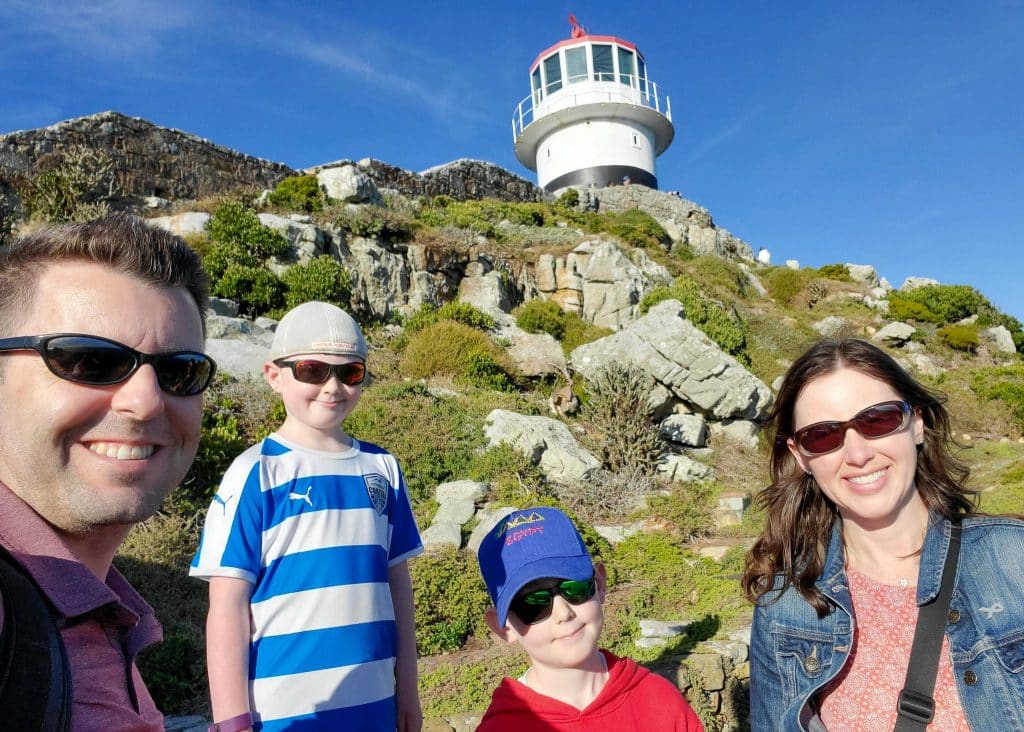
Playful Penguins at Boulders Beach
We started at the public path that winds along the outer edge of Boulders Beach. Dense bushes line the walkway, blocking some of the view—but providing perfect shelter for nesting African penguins. Even from the path, we saw plenty of them waddling around, including pale grey fluffy chicks tucked under their parents along the fence line.
One penguin even got a little too close for comfort—a protective mama took a peck at Derek’s GoPro when we unknowingly approached her nest!
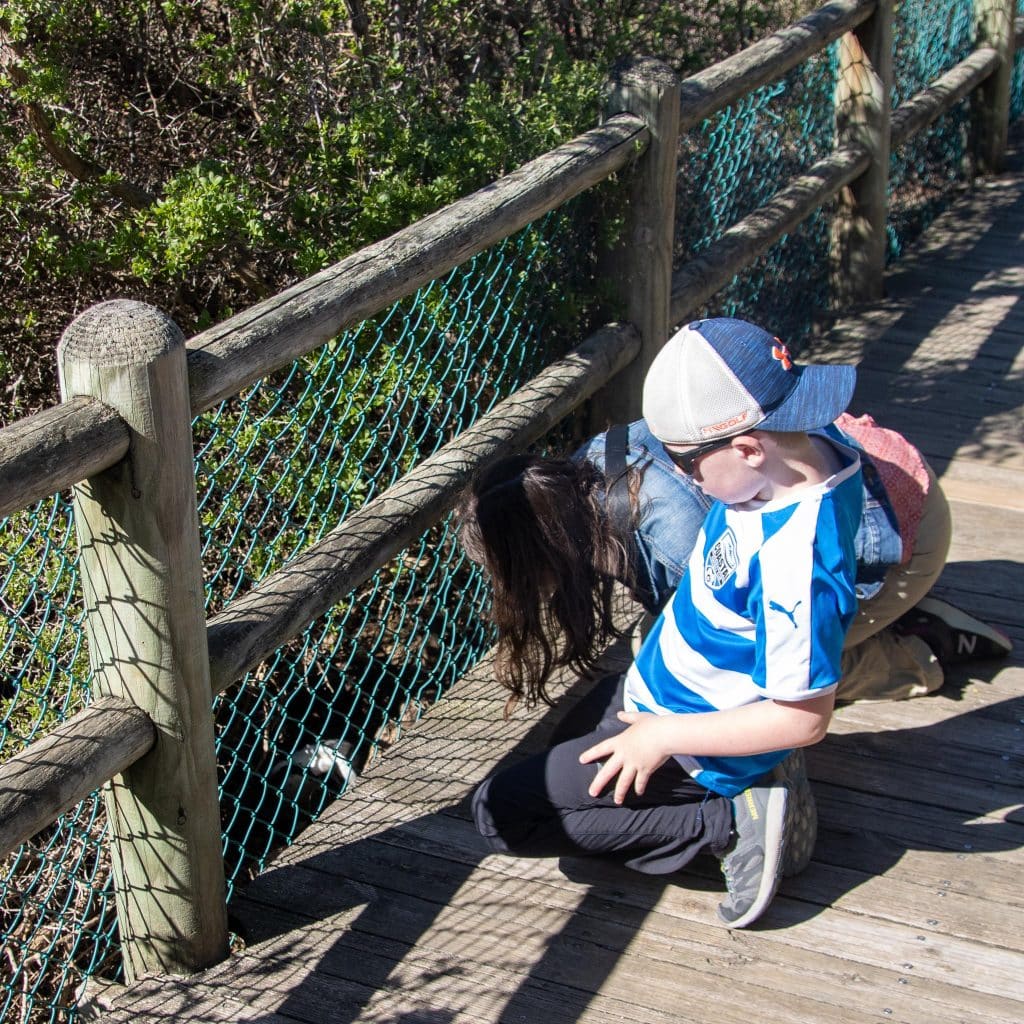
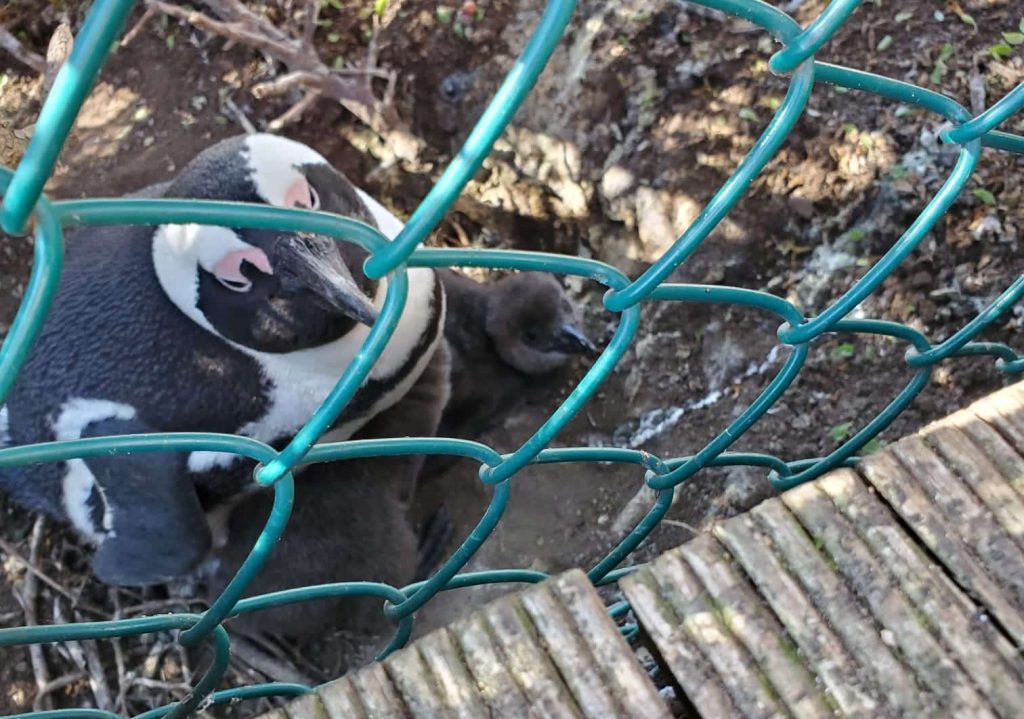
A small entrance fee gets you access to the main beach area, where dozens of penguins dot the sand and shuffle between shallow burrows they’ve dug for their eggs.
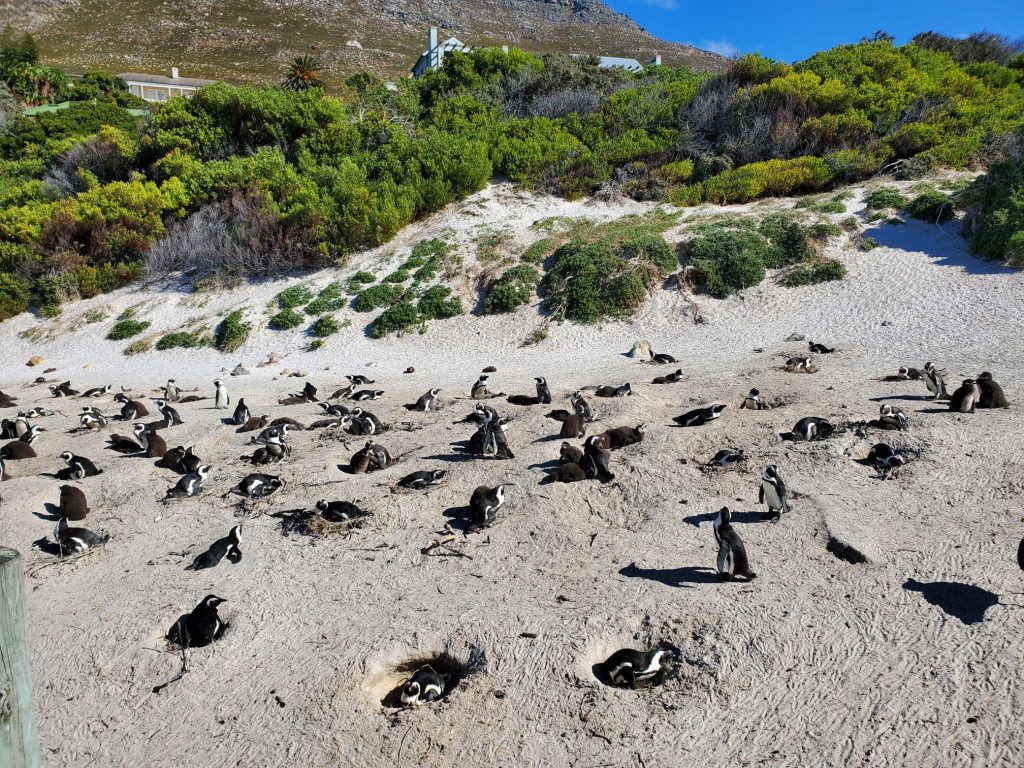
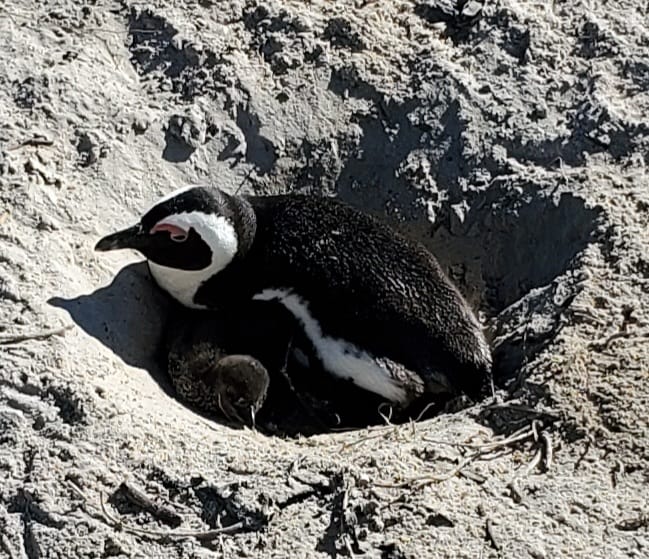
Our favourite moment? Watching them awkwardly waddle down to the water, then transform into sleek swimmers as they dove through the waves.
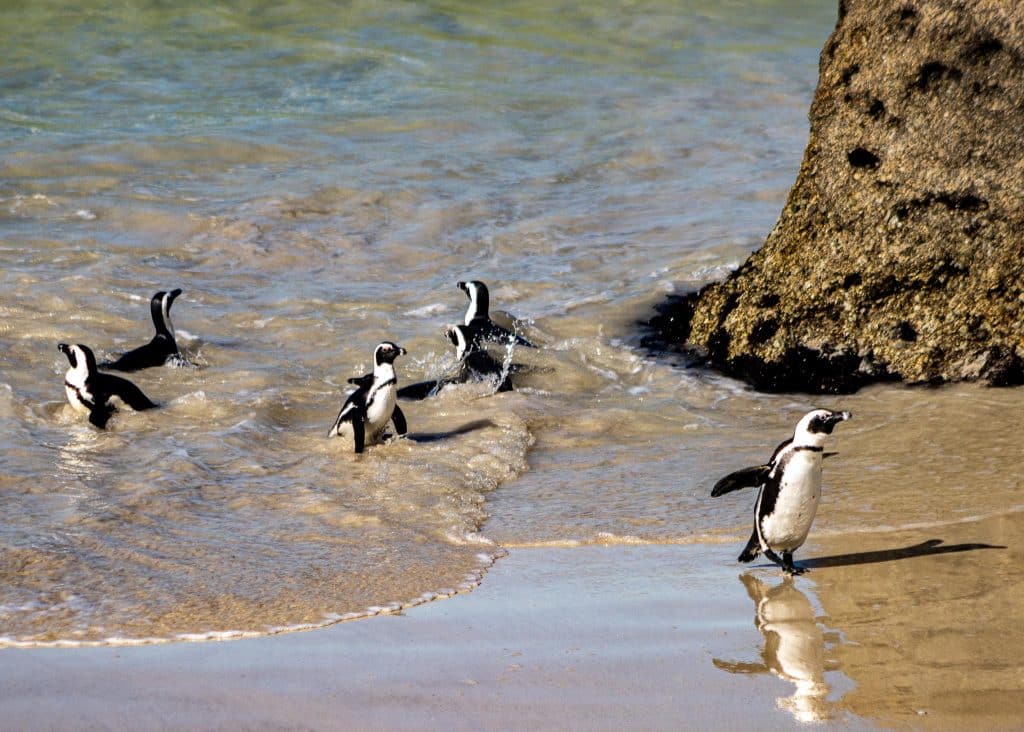
If it’s a warm day, bring a towel. The entrance fee also gives you access to a second beach where you can swim or picnic. But fair warning: when we visited, the water was a brisk 8°C—not exactly inviting for a dip!
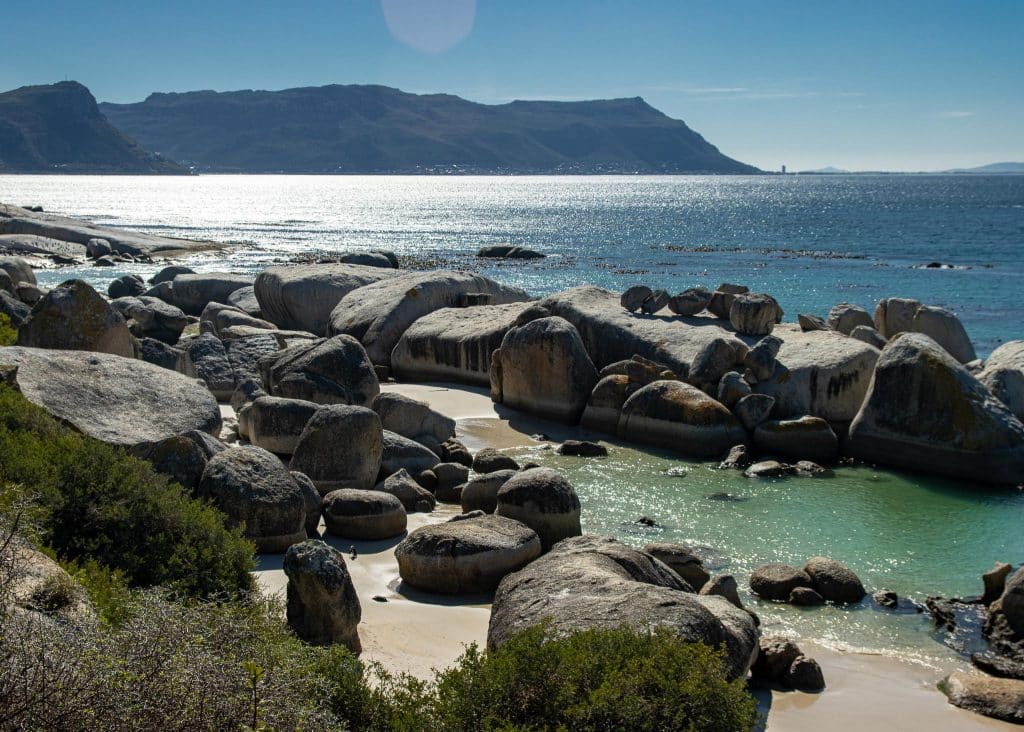
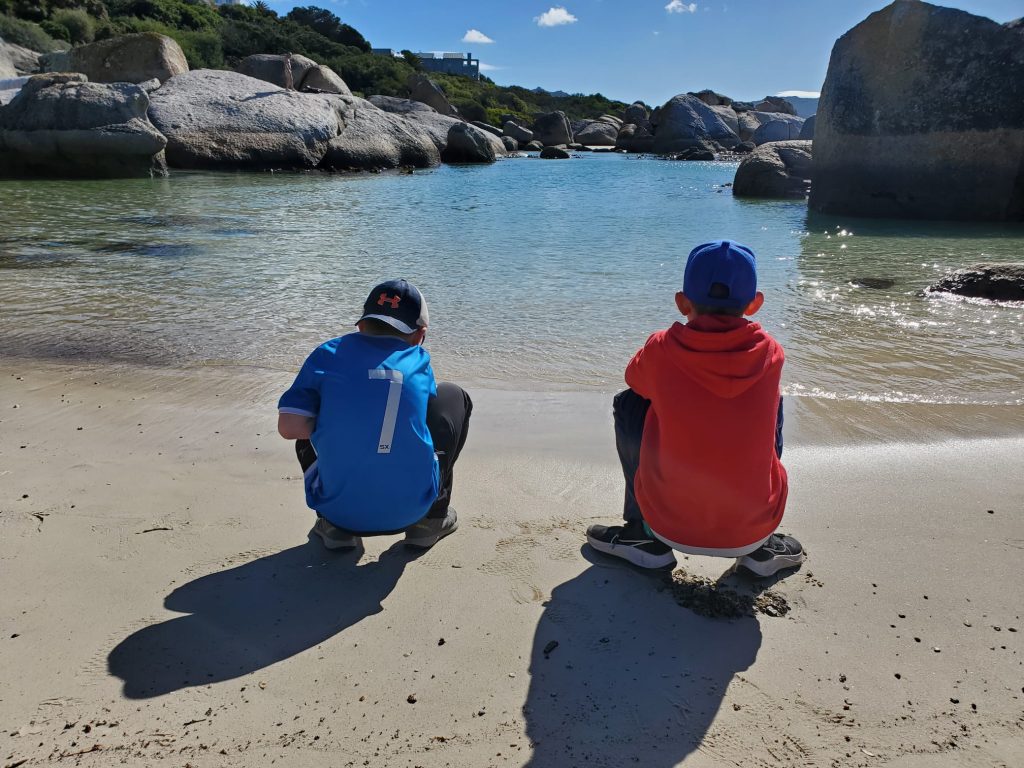
Cape of Good Hope & Cape Point
The Cape of Good Hope and Cape Point sit within Table Mountain National Park, a protected reserve of wind-swept coastlines, savannah hills, and short hiking trails, and is well worth the national park entrance fee.
Entrance fee to Table Mountain National Park: CAD 90 for our family. Pricing is based on the number of people in the car and vehicle type.
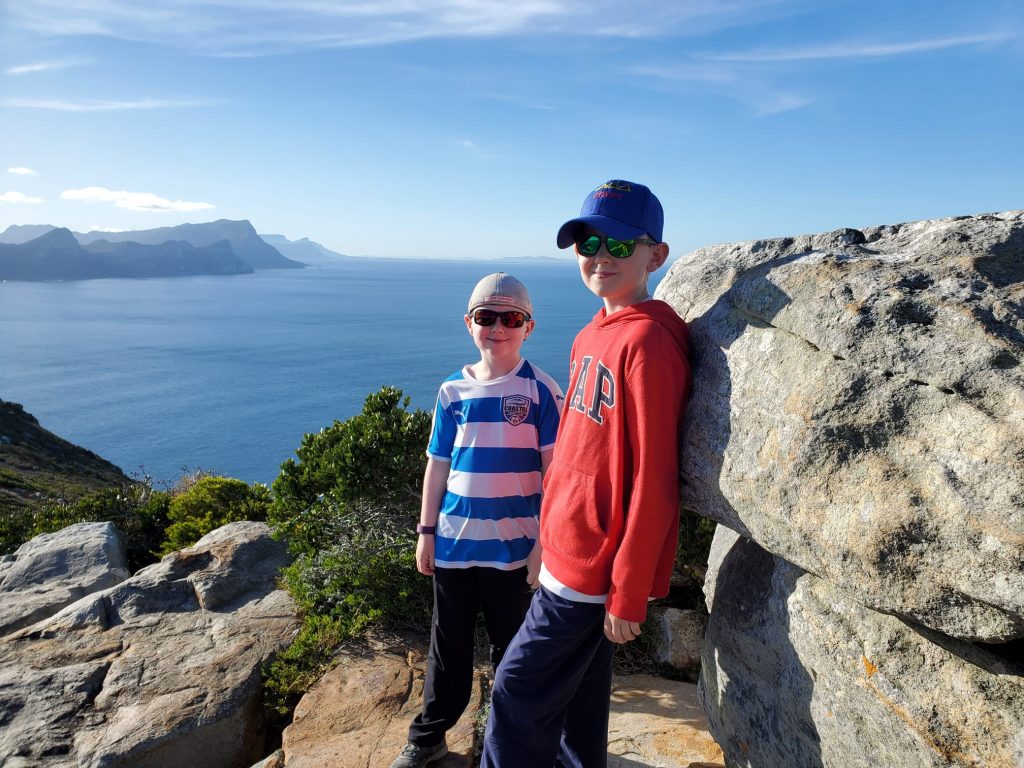
Cape of Good Hope
Though often mistaken as the southernmost tip of Africa (that title actually goes to Cape Agulhas), the Cape of Good Hope is still historically significant as a navigation point for sailors during early exploration. This part of the Cape has a rugged, untamed feel, with crashing waves below and strong winds that remind you just how far south you’ve come.
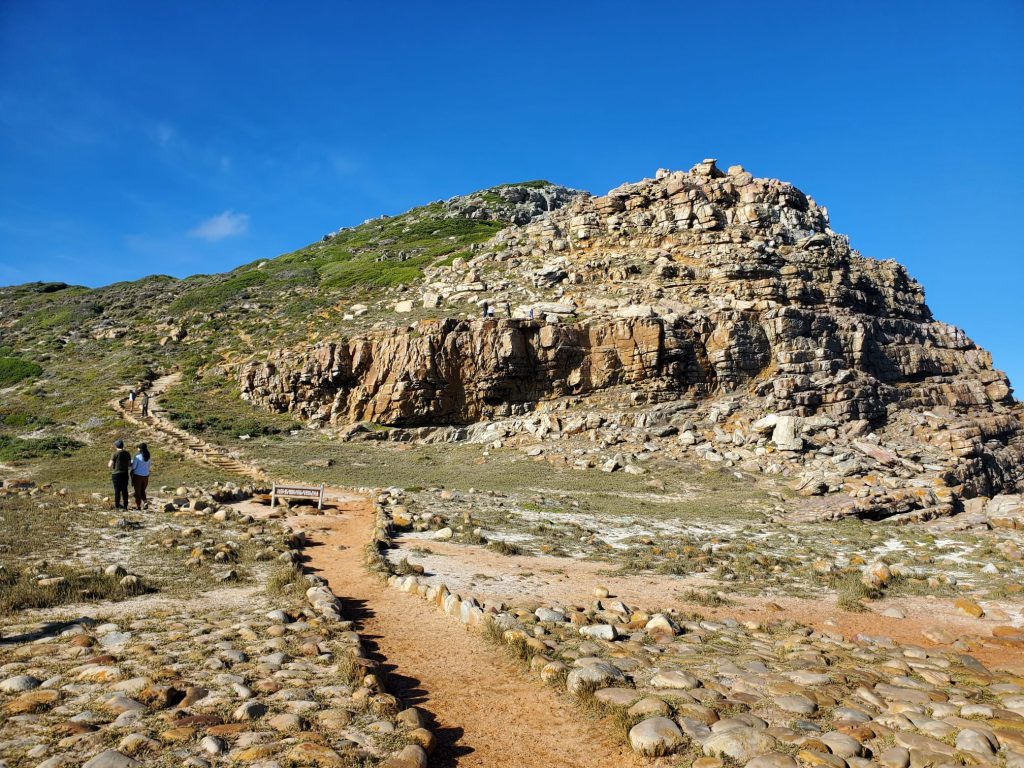
Here, we parked near the famous sign marking the Cape as the most south-western point of Africa, and took the short hike up a nearby hill for sweeping views of the coastline. We also spotted a few baboons in the distance and heard that zebra sightings are common in the area, though we didn’t see any that day.
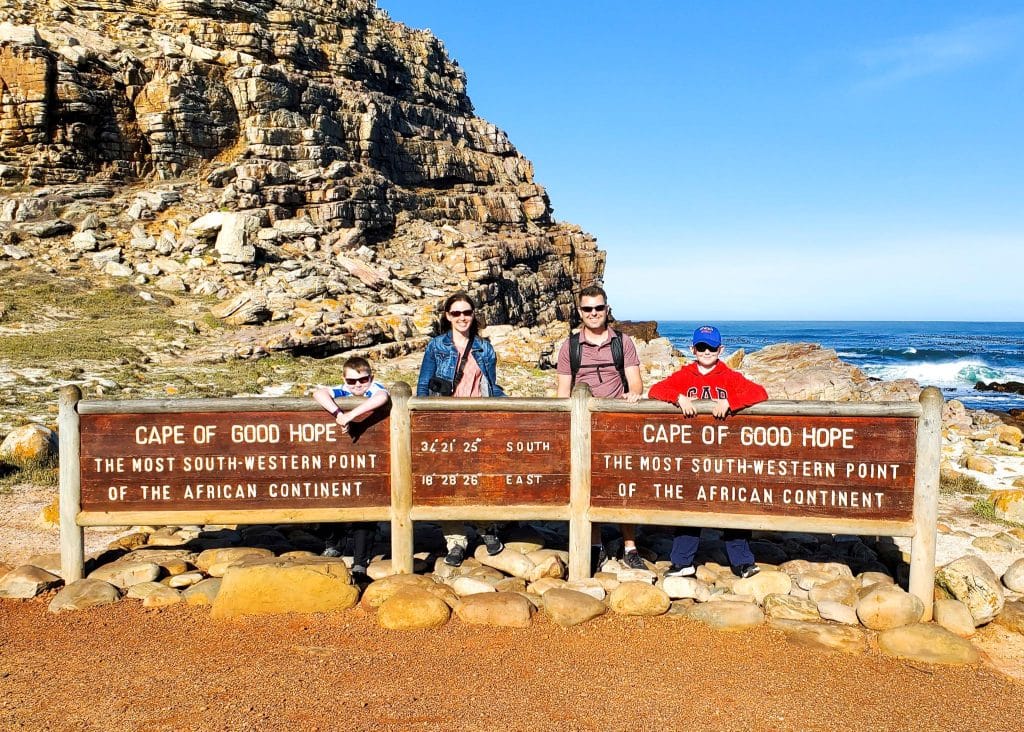
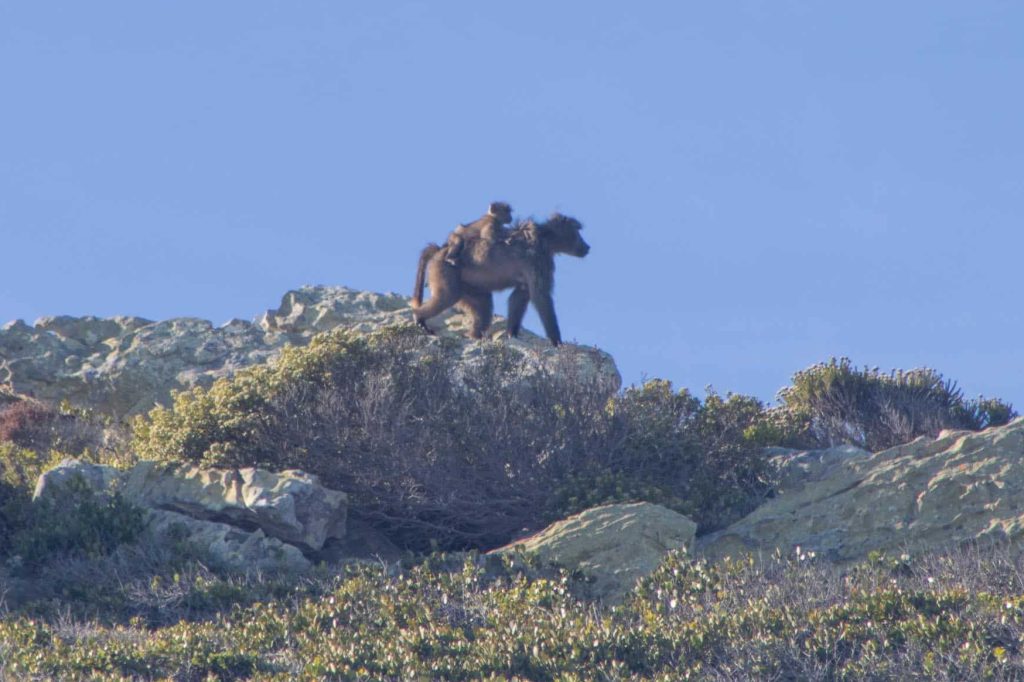
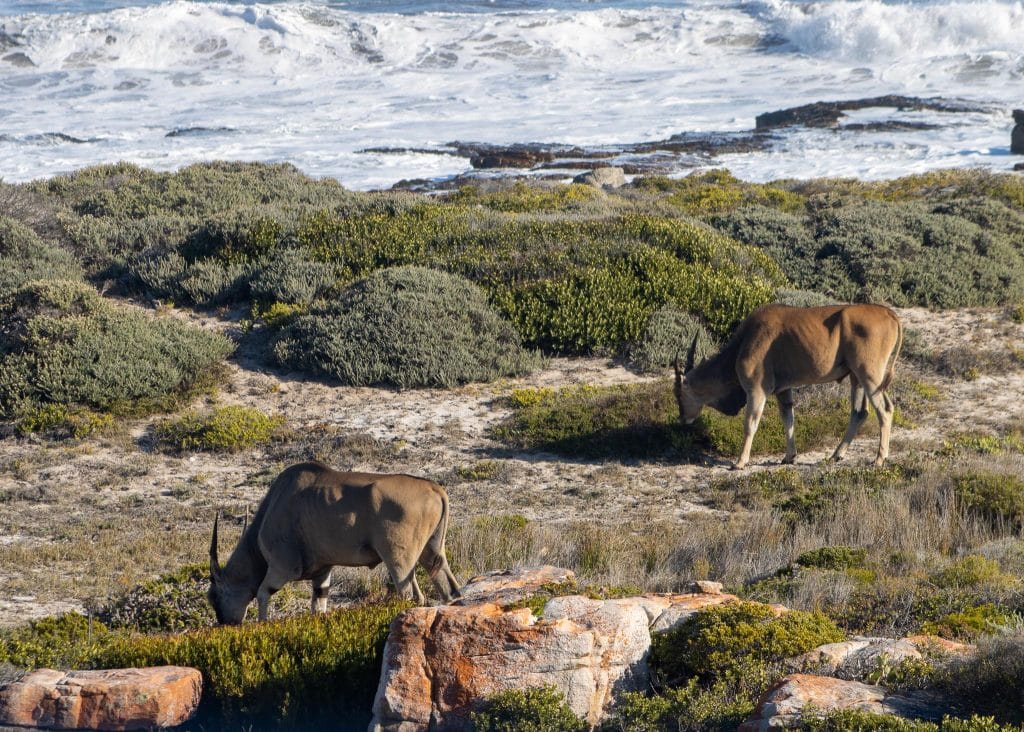
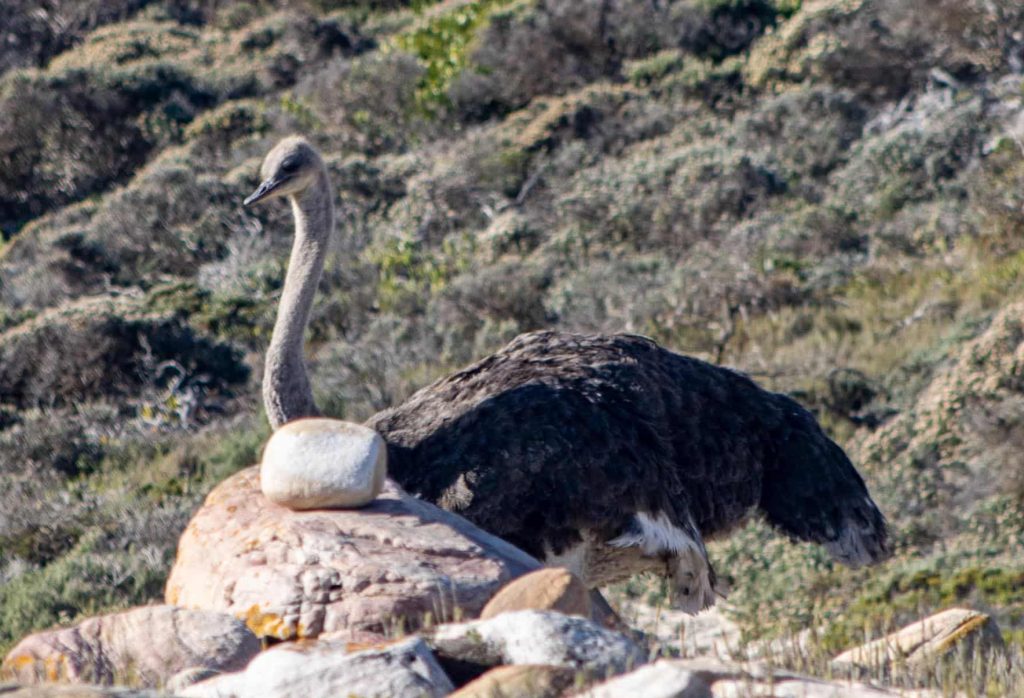
Cape Point
Just a short drive (or long walk) away, Cape Point is known for its dramatic coastline, with cliffs and lighthouses perched high above the sea.
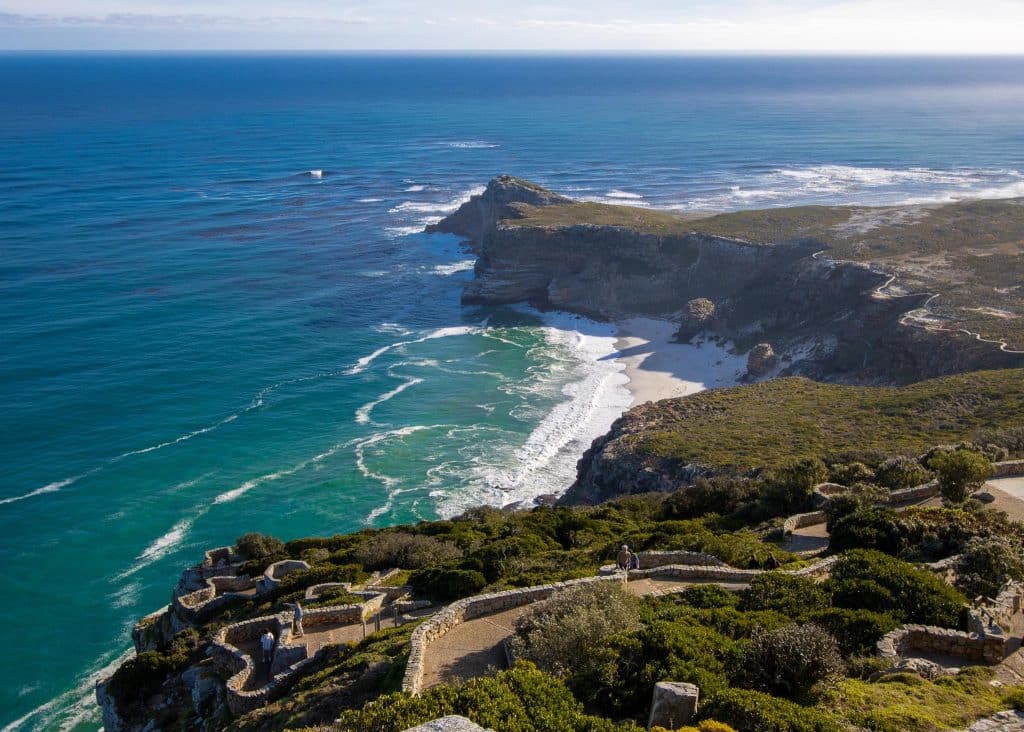
You can hike up to the main lighthouse or take the funicular (a small cable car) if you’re short on time or energy. At the top, the panoramic ocean views are breathtaking, especially when the sun cuts through the clouds and lights up the water below.
There’s also a longer coastal trail connecting the Cape of Good Hope to Cape Point if you have more time and want to escape the crowds.
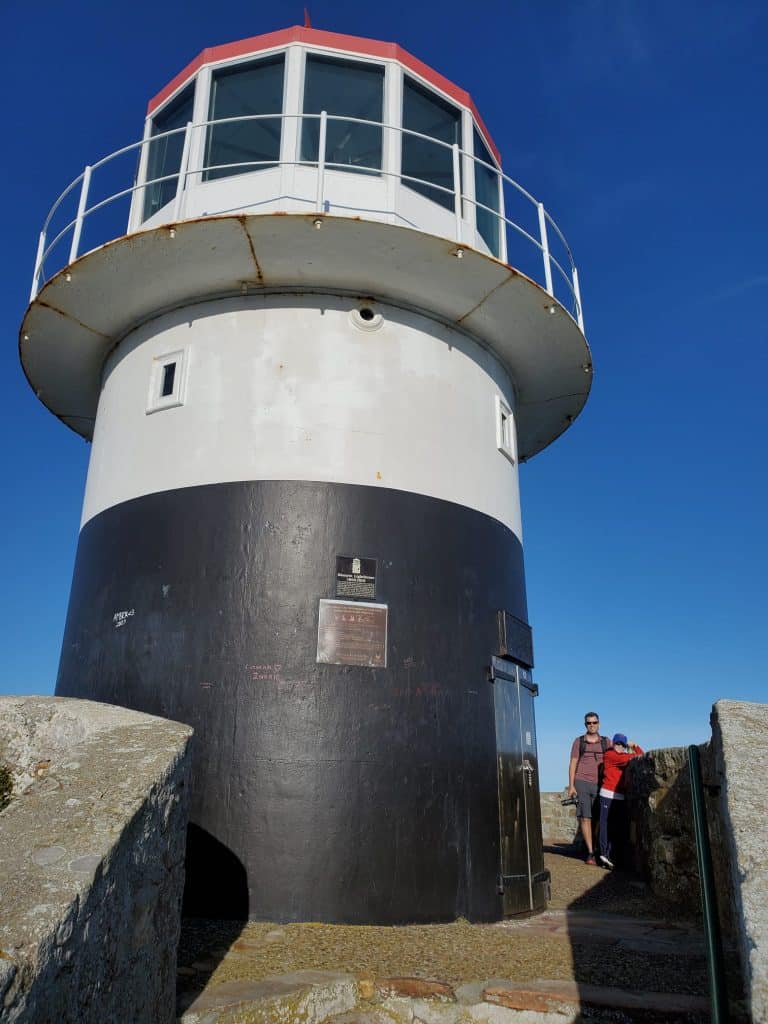
Getting There
From Cape Town, it’s about a one-hour drive south to Boulders Beach. We took the scenic coastal route, which includes a toll (based on car size), but the views are absolutely worth it. After visiting the penguins, it was another 30-minute drive to reach the entrance to Table Mountain National Park and the two Capes.
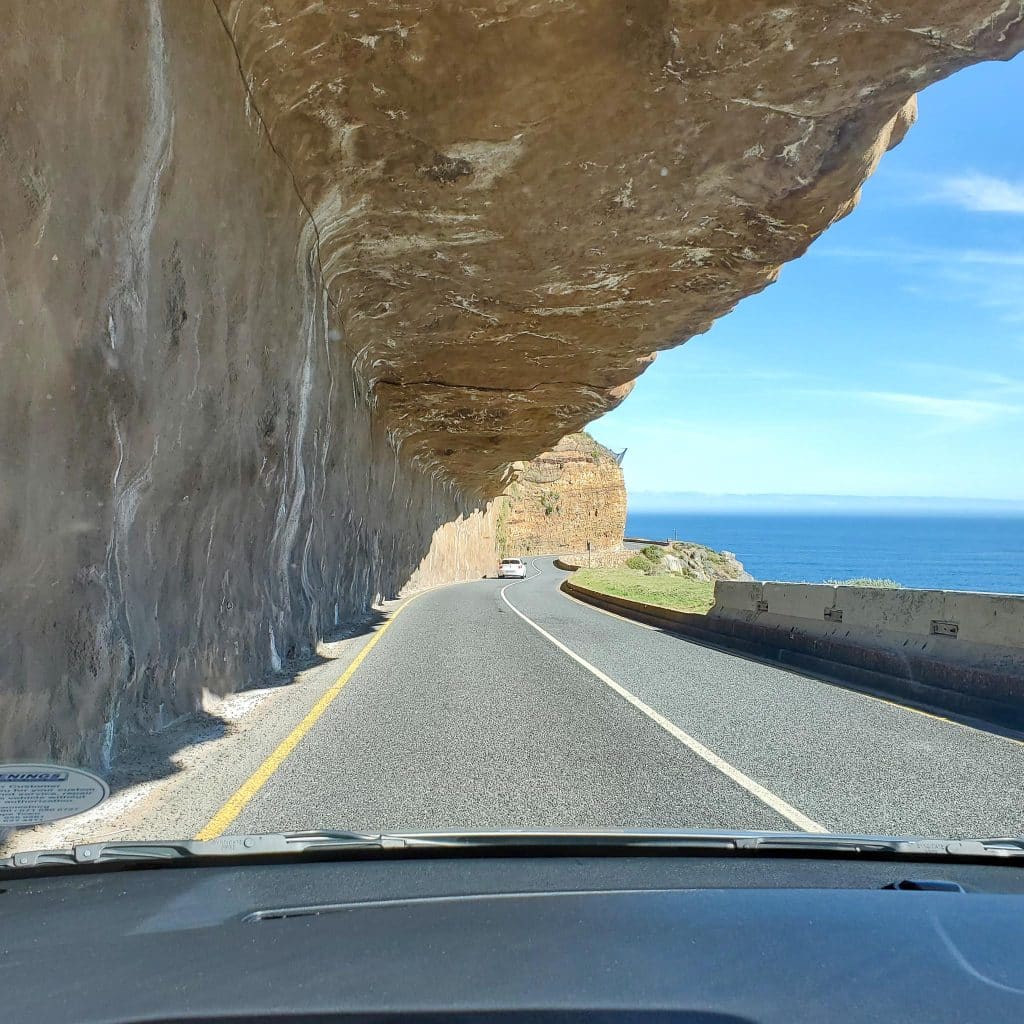
Tips for Visiting
- Visit Boulders Beach early to avoid crowds and get the best penguin sightings.
- Pay the entrance fee to access the main colony beach, and consider bringing a picnic for the second beach area.
- Watch your step and your gear. Protective penguins are serious about their space!
- Dress for the wind at the Cape of Good Hope. It gets wild out there!
- Allow time for both Capes. The walk or drive between them is short, but both spots deserve exploration.
- Bring binoculars if you’re hoping to spot wildlife like baboons or zebras.
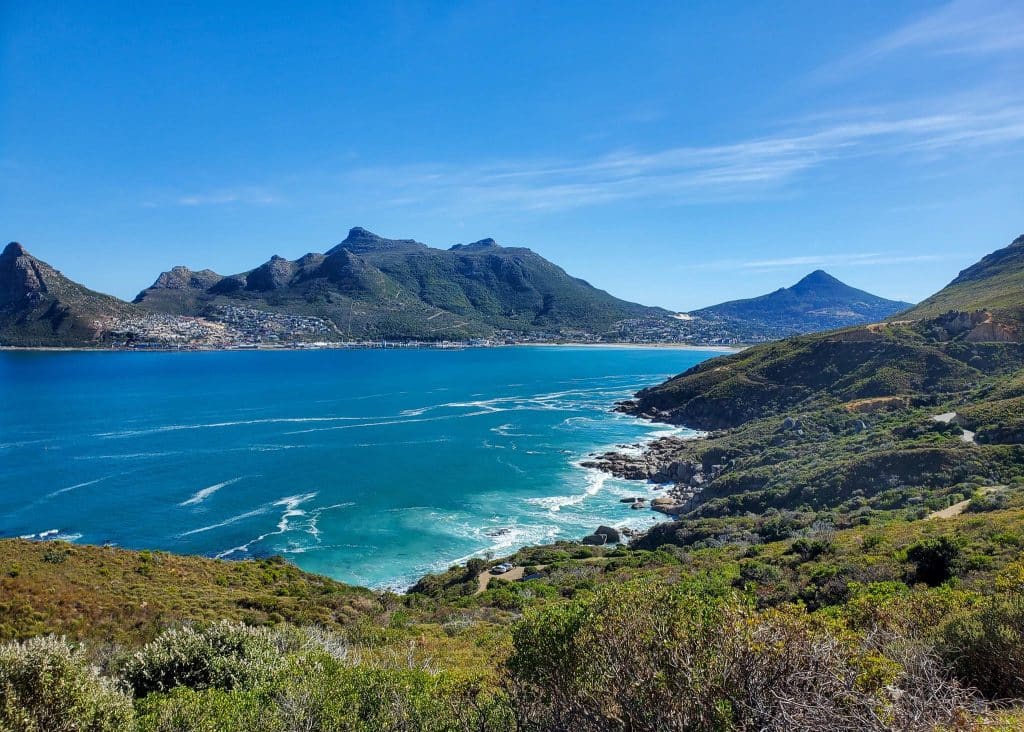
From the Edge of Africa
Between the waddling penguins and the powerful scenery of the Cape, this day trip from Cape Town offered some beautiful and surprising moments of our time in South Africa. It’s the kind of place where you feel like you’re standing at the edge of the world, alongside a colony of tiny, feathered locals.
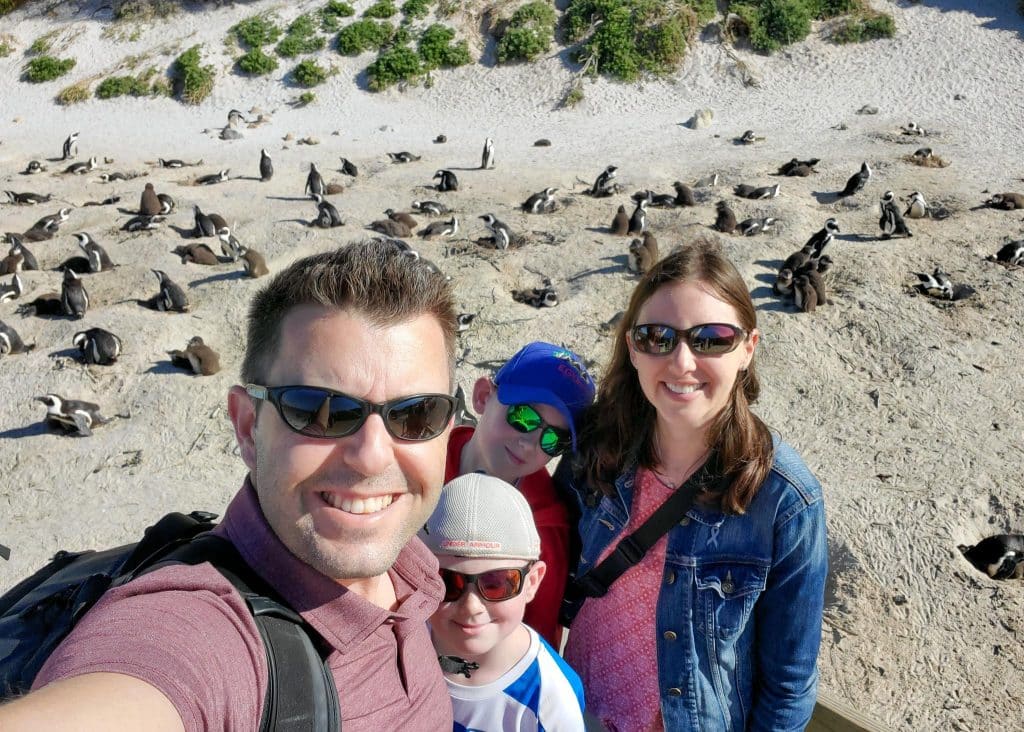
Ready to Explore South Africa?
Check out these related posts to help plan your trip:

